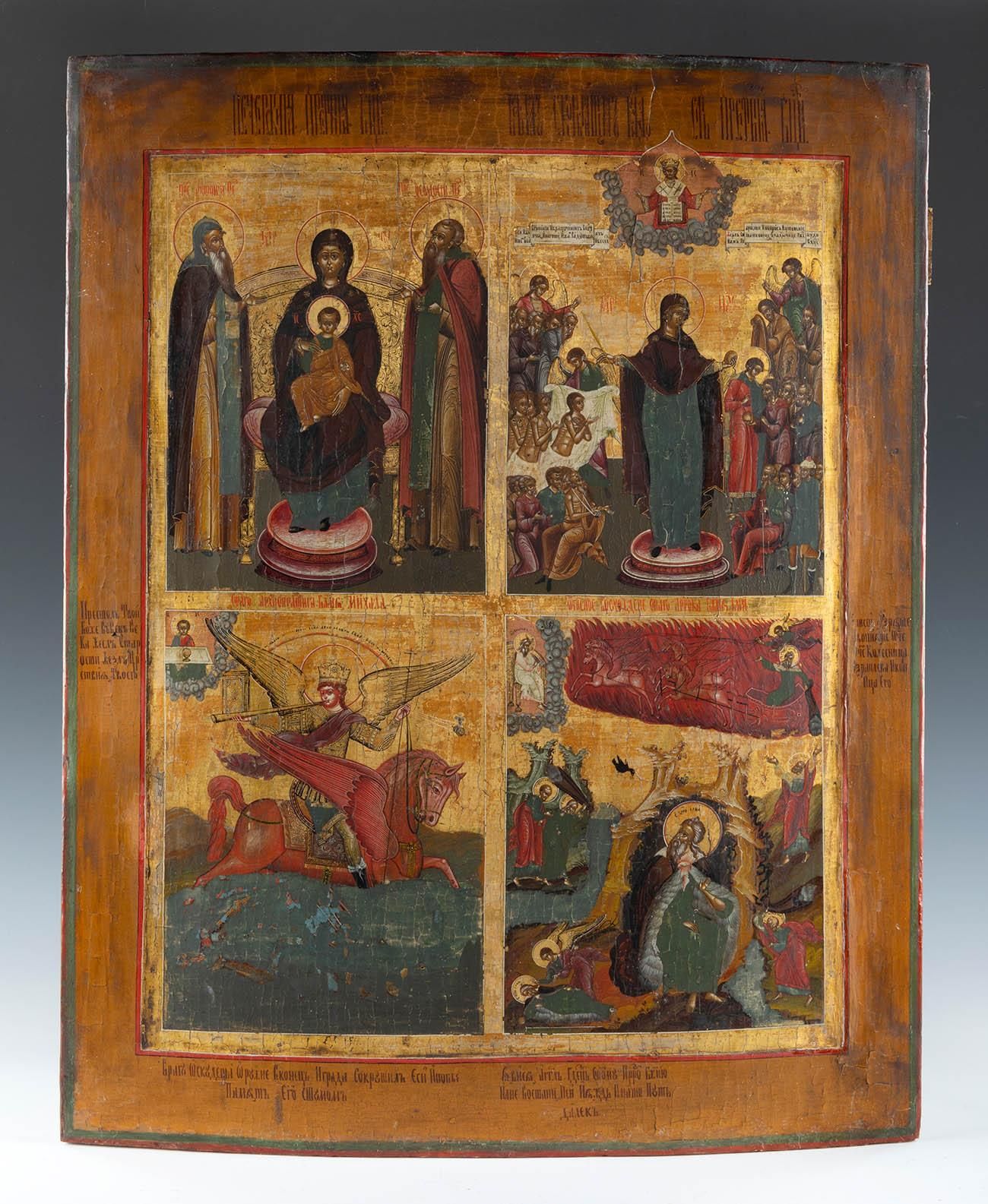Description
Russian school, workshops of the Old Believers, probably Mstera school,XVIIIth-XIXth centuries.
Russian school, Old Believers' workshops, probably Mstera school, 18th-19th cent. 18TH-19TH C. Four sacred scenes. The Mother of God, The Virgin of Sorrows, Saint Michael, Elijah. Tempera, gold leaf on panel. Measurements: 72 x 57 cm. Four-part icons were widespread in Byzantium from ancient times, and appeared in Russia in the 14th and 15th centuries. In the 18th and 19th centuries, when icons were produced not only in monastic workshops, but also by craftsmen, this type of sacred images began to be commissioned more frequently and were made for family prayer rooms, called the red corner, with the composition of the images being determined by the future owner. It is difficult to know the context in which this rather large icon was created. It could probably be an icon made for a church, as icons for private use were usually smaller. The upper left image depicts the Mother of God, holding the Child Jesus in her arms and on her knees. The identity of the saints around her is difficult to decipher, as the inscriptions have been partially lost, but from their clothing it can be established that they are the venerable saints. In the second image, in the upper register on the right, is the image of the Virgin of All Sorrows, as indicated by the inscription on the border. This is a slightly modified iconographic version, bearing in mind that she is usually represented in the mystical mandorla holding the Child Jesus. Even so, it maintains the structure of the canon, the Virgin, exaggeratedly larger than the other figures, is in the central register of the icon, in this case with her arms open as a symbol of blessing and charity. The images in the lower register are dedicated to the selected saints, St Michael on the left and the prophet Elijah on the right. The representation of St. Michael on horseback follows the typology assigned to him by the Old Believers in the 18th century. At this time his representation became popular, including the face, in reddish tones. The composition ends with the canonical representation of the prophet Elijah. He is in the desert and is surrounded by miniatures depicting different passages from his life, including miracles and his ascent to heaven, even though he was mortal. All the individual scenes of the icon are accompanied by extensive inscriptions dedicated to each passage.
3
Russian school, workshops of the Old Believers, probably Mstera school,XVIIIth-XIXth centuries.
